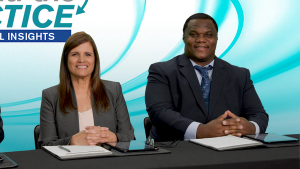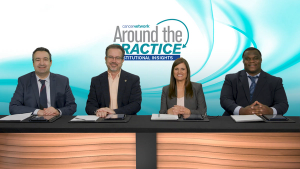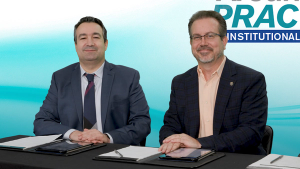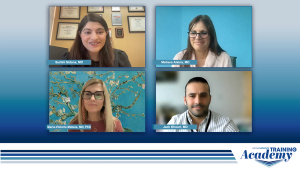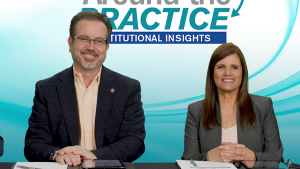Articles by Melissa Alsina, MD
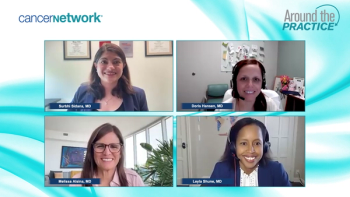
Panelists discuss the growing importance of early integration and collaboration between community oncologists and specialized centers in the evolving chimeric antigen receptor (CAR) T-cell therapy landscape for multiple myeloma, emphasizing timely referrals, coordinated care, and strategic sequencing with other immunotherapies to optimize patient outcomes.

Panelists discuss the essential role of supportive care following chimeric antigen receptor (CAR) T-cell therapy in multiple myeloma, emphasizing infection prevention through prophylaxis, immunoglobulin replacement, and vaccination strategies, along with the importance of coordinated long-term management between CAR T centers and community oncologists to ensure sustained survivorship care.

Panelists discuss the need for consolidation and maintenance strategies following chimeric antigen receptor (CAR) T-cell therapy in patients with high-risk multiple myeloma, highlighting emerging real-world and clinical evidence supporting the use of agents like lenalidomide and bispecific antibodies to extend disease control and improve outcomes in those with historically shorter remissions.

Panelists discuss real-world evidence showing that chimeric antigen receptor (CAR) T-cell therapy is safe and effective in traditionally excluded populations with multiple myeloma, including those with comorbidities or central nervous system (CNS) involvement, emphasizing the role of multidisciplinary care, proactive toxicity management, and growing confidence in extending access to high-risk patients.

Panelists discuss emerging strategies to manage delayed neurotoxicity from chimeric antigen receptor (CAR) T-cell therapy in multiple myeloma, highlighting the predictive value of postinfusion lymphocyte expansion, the potential of early dexamethasone intervention, and the need for continued research and collaboration to refine toxicity prevention and ensure safer, broader use of CAR T in earlier treatment lines.

Panelists discuss the growing support for incorporating chimeric antigen receptor (CAR) T-cell therapy earlier in the multiple myeloma treatment pathway, emphasizing the importance of timely referral and personalized decision-making to maximize patient outcomes before disease progression or comorbidities limit eligibility.

Panelists discuss the critical role of sequencing B-cell maturation antigen (BCMA)-targeted therapies in multiple myeloma, emphasizing that administering chimeric antigen receptor (CAR) T-cell therapy before bispecific antibodies leads to better outcomes, while real-world evidence and emerging guidelines increasingly inform strategic decisions based on treatment timing, disease urgency, and patient-specific factors.

Panelists discuss the emerging real-world use of talquetamab as a bridging therapy before chimeric antigen receptor (CAR) T-cell treatment in patients with advanced multiple myeloma, highlighting its ability to rapidly reduce tumor burden and improve CAR T outcomes despite unique toxicities and emphasizing how clinician-driven innovation is shaping practice ahead of clinical trial data.

Panelists discuss the real-world comparison of ciltacabtagene autoleucel (cilta-cel) and idecabtagene vicleucel (ide-cel) chimeric antigen receptor (CAR) T-cell therapies for multiple myeloma, highlighting cilta-cel’s superior efficacy but higher toxicity and emphasizing the importance of tailoring treatment decisions to individual patient factors such as disease stage, health status, and personal preferences.

Panelists discuss the transformative impact of chimeric antigen receptor (CAR) T-cell therapy on treating relapsed/refractory multiple myeloma (R/R MM) in real-world settings, emphasizing improved patient outcomes, the expanding role of real-world evidence, and the nuanced decision-making required in selecting among newly approved, highly effective immunotherapies.
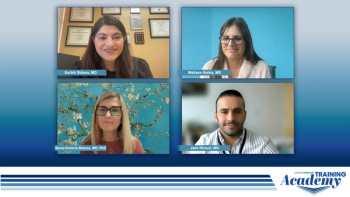
The panel looks to the future of relapsed/refractory multiple myeloma treatment and the remaining unmet needs for patients.

Experts review recent data on non-BCMA-targeting bispecifics for the treatment of R/R MM.

The panel discusses how non-BCMA-targeting bispecifics might be selected and sequenced in MM.
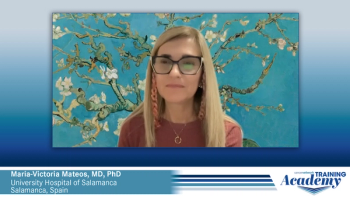
Maria-Victoria Mateos, MD, PhD, presents the case of a 52-year-old patient with penta-exposed MM who receives treatment with a non-BCMA-targeting bispecific.

Dr Maria-Victoria Mateos shares her expert perspectives on current efficacy and safety data on combination strategies with bispecifics in relapsed/refractory MM.

The panel discusses how they would approach the treatment of a patient with relapsed/refractory MM who progresses on BCMA-targeting bispecifics.
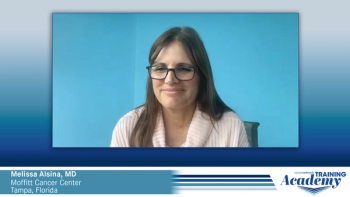
Melissa Alsina, MD, presents the case of a 39-year-old patient with multiple myeloma who has disease progression after initially responding to teclistamab.

The panel shares their experiences with the sequencing of BCMA-targeting therapies in MM, with particular focus on treatment of patients who progress on CAR T-cell therapy with teclistamab.
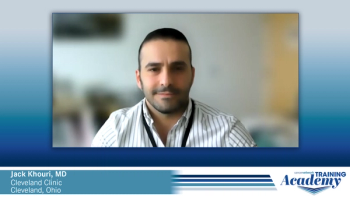
Dr Jack Khouri highlights recent data updates on other BCMA-targeting bispecific antibodies that are in clinical development in multiple myeloma.

Maria-Victoria Mateos, MD, PhD, reviews how she manages the side effects of teclistamab, including cytokine release syndrome, in patients with relapsed/refractory multiple myeloma.

Melissa Alsina, MD, explains the mechanism of action, data updates and dosing schedule of the BCMA-targeting bispecific antibody teclistamab.
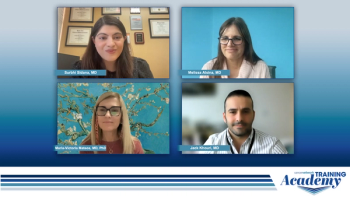
The panel discusses their potential treatment approaches for the presented patient case and how they select patients with relapsed/refractory MM for teclistamab and optimally sequence therapies.

Jack Khouri, MD, presents the case of a 68-year-old patient with relapsed/refractory multiple myeloma and extramedullary disease treated with teclistamab.
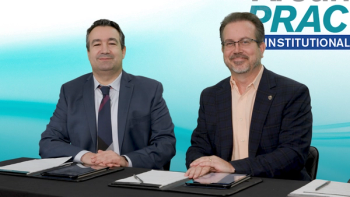
Closing out their discussion on the management of multiple myeloma, experts from the Moffit Cancer Center highlight key unmet needs and future directions in care.
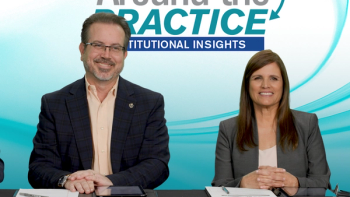
Centering discussion on a patient scenario of multiply relapsed multiple myeloma, panelists consider use of CAR T-cell therapy or bispecifics in this setting.
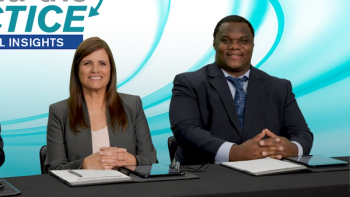
Shared insight on the development of CAR T-cell therapies and their use in the later-line setting for patients with multiply relapsed multiple myeloma.
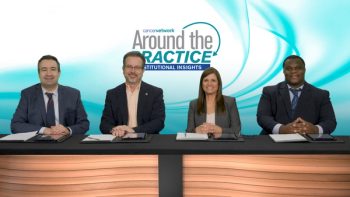
Expert perspectives on the combination of novel bispecific therapies and where they may fit into the treatment paradigm of relapsed/refractory multiple myeloma.
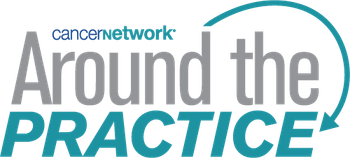
Current standard of care options in transplant-eligible, newly diagnosed multiple myeloma have been outlined in groundbreaking trials, of which a group of experts convened to discuss the best treatment options.

A brief review of talquetamab, a novel agent in the setting of relapsed/refractory multiple myeloma that targets GPRC5D.

Following their discussion on teclistamab, experts from the Moffit Cancer Center highlight other BCMA-targeted therapies available in the relapsed/refractory setting of multiple myeloma.













